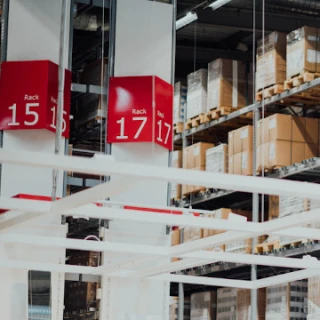Challenge #1: Coordinating Inbound flow
The retail store is core for multiple inbound scenarios, mainly from vendors and distribution centers.
Deploying EWM in the retail store in the same SAP landscape, the operators can easily process the goods receipts and proceed with the put-away process without any additional repacking or relabeling activities.
Upon the receipt of the packages prepared in the distribution centers, EWM can direct the goods straight from the goods receipt area to the good issue zone to fulfill a Click & Collect order.
If any stock discrepancy occurs at the receipt of goods into the store, it will be easier to book the difference against the carrier or the issuing distribution center by using the appropriate exception codes.
It’s important for vendors to deliver to shops prior to the opening hours to solve this challenge, Dock Appointment Scheduling in EWM supports the ability to fix delivery hours for each vendor. Store Managers can therefore improve inbound planning so as to allocate the required resources to support the unloading and put-away activities.
In case where distribution warehouses are having to support complex processes dealing with customer returns, moving this operation into the store using EWM, improves the overall operation and customer experience, while reducing overall operating costs.



/Vision-of-the-manufacturing-future-720x360-(1).webp?mode=autocrop&w=320&h=240&attachmenthistoryguid=0948d266-3ba3-47be-b13d-2a1afd6cb2ae&v=&focusX=486&focusY=187&c=689c4a732e0fdef05b06067118216c5a74b54a8233f2db569c76104eb5b31904)
/DUK-6-tips-running-remote-warehouse-750x400-(1).webp?mode=autocrop&w=320&h=240&attachmenthistoryguid=1c1eb4f5-863f-4e2d-b7e1-76f8bd330d42&v=&focusX=464&focusY=188&c=c8f7478c7be87c77b7e0feaf4a787fe83f106af2552079d0388b2bff7695ef3c)